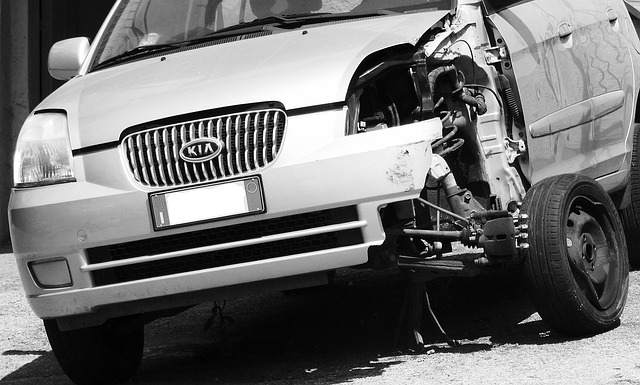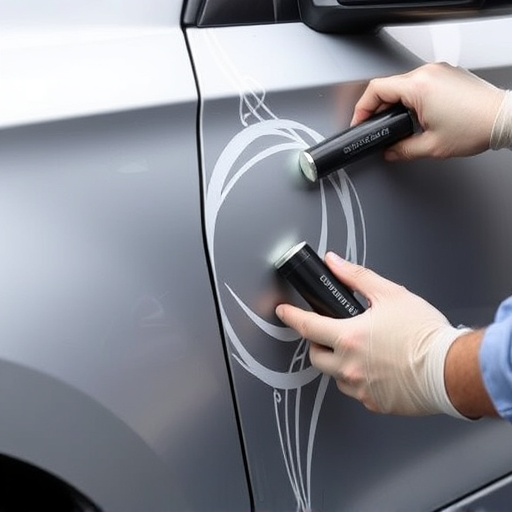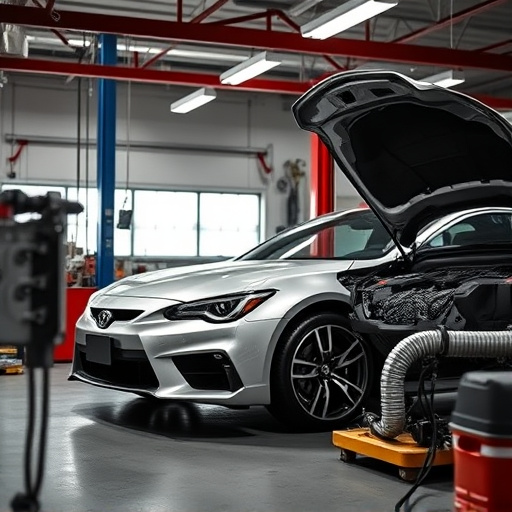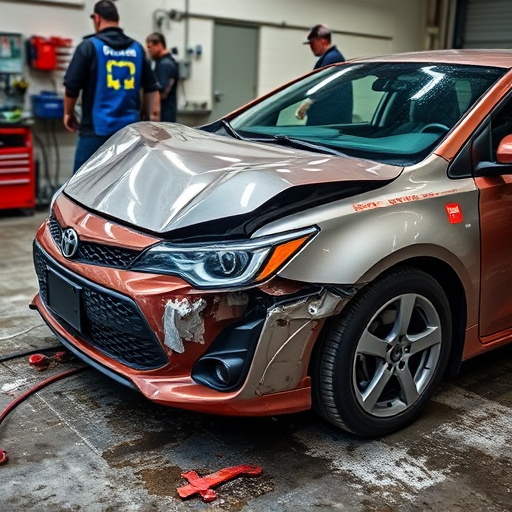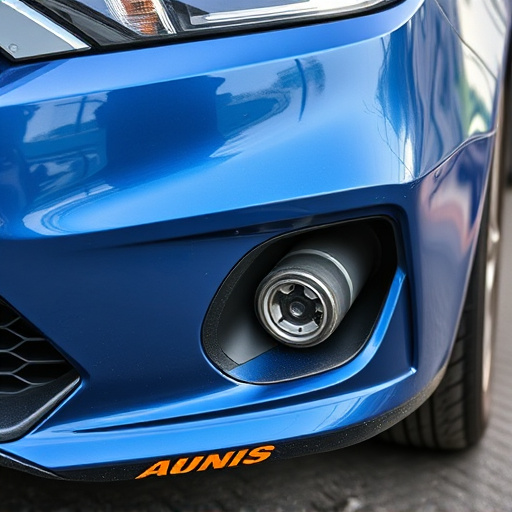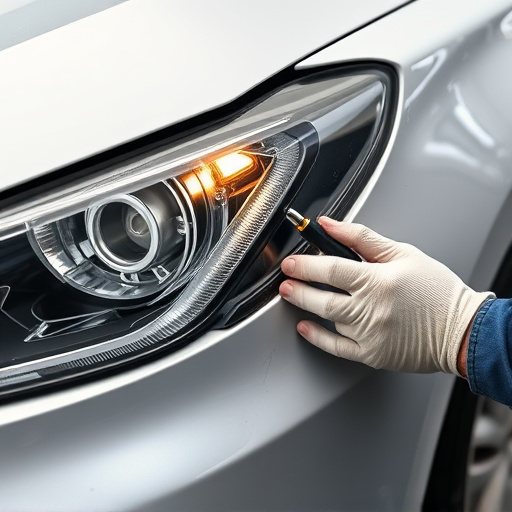Electronic diagnostics repair in modern vehicles involves managing complex systems and specialized skills. Common issues include faulty sensors, incorrect code readings, and communication errors. Troubleshooting requires systematic checks, logical analysis, and detailed logging. Essential tools for accurate repairs include multimeters, soldering irons, and diagnostic scan tools. Safety measures like protective gear and proper grounding are crucial to avoid damage during repairs.
Looking to dive into the world of electronic diagnostics repair? This comprehensive guide is your perfect starting point. We’ll walk you through understanding complex systems, identifying common issues, and mastering troubleshooting techniques. Armed with the right tools and safety measures, you’ll gain confidence in repairing various electronic diagnostic devices. Discover essential knowledge and practical tips for success in this rewarding field, all tailored for complete beginners.
- Understanding Electronic Diagnostics Systems
- Common Issues and Troubleshooting Techniques
- Tools and Safety Measures for Repairs
Understanding Electronic Diagnostics Systems

Electronic Diagnostics Systems are the brain of modern vehicles, responsible for monitoring and controlling various functions through complex networks of sensors and computers. Understanding these systems is crucial for anyone looking to engage in electronic diagnostics repair. At their core, they include engine management, transmission control, and braking systems, all of which rely on intricate data exchange to ensure optimal performance and safety.
These systems have evolved significantly over the years, driven by advancements in technology and a need for more efficient, eco-friendly vehicles. For instance, modern cars often feature advanced driver assistance systems (ADAS) that include features like automatic emergency braking and adaptive cruise control. While these innovations enhance safety, they also introduce complexity, making electronic diagnostics repair a specialized skill within the automotive industry. Other areas of focus in this field include troubleshooting and repairing sensors related to bumper repair and auto glass repair, ensuring seamless integration with car restoration efforts.
Common Issues and Troubleshooting Techniques

When diving into electronic diagnostics repair, understanding common issues is key to successful troubleshooting. Many modern vehicles are equipped with complex systems that can present challenges, such as faulty sensors, incorrect code readings, or communication errors between components. For instance, a car paint services issue might not always be apparent in the visible layers; a skilled technician must diagnose problems like moisture intrusion or corrosion affecting electrical signals, often stemming from minor damages like a fender bender.
Troubleshooting techniques for electronic diagnostics repair involve systematic checks and logical analysis. Start by verifying power supply and ground connections, ensuring they are secure and free from damage. Use diagnostic tools to scan for error codes, which can pinpoint specific components or systems in need of attention. For car paint repair-related issues, examining the vehicle’s body for signs of previous accidents or moisture intrusion is crucial before diving into electronic repairs. Keep a detailed log of observations and test results to facilitate accurate identification and resolution of problems.
Tools and Safety Measures for Repairs

Before tackling any electronic diagnostics repair, it’s crucial to assemble a well-equipped toolkit and prioritize safety measures. Essential tools for this process include multimeters for voltage and resistance testing, soldering irons for component replacement, and diagnostic scan tools to interface with the vehicle’s onboard computer. For instance, when dealing with sensitive electronic components, a digital multimeter ensures precise measurements during troubleshooting or replacement.
Safety is paramount in any repair, especially in the realm of electronic diagnostics. Always wear protective eyewear and gloves to shield against flying debris or chemical substances. Ensure adequate ventilation, as some tasks may involve working with solvents or other hazardous materials. Moreover, ground yourself properly before handling electrical components to avoid static discharge, which can damage sensitive parts—a common issue in vehicle collision repair and automotive restoration projects.
For those new to the world of electronic diagnostics repair, this guide has equipped you with a solid foundation. By understanding the systems, familiarizing yourself with common issues, and adopting safe practices, you’re now ready to tackle repairs with confidence. Remember, patience and meticulous attention to detail are key. Continue exploring and expanding your knowledge, as electronic diagnostics repair is an ever-evolving field. With practice, you’ll become proficient in diagnosing and fixing complex issues, ensuring smoother operations for various industries that rely on these systems.
